Intel Xeon processors are Intel’s top of the line product. They might not be a best seller in terms of sales volume, but they tend to have huge profit margins because they are mostly catered for businesses that seek the ultimate in computing power at almost any cost. And at this level of performance, you will find chips that will cost $4,000 to $5,000 and in some cases where it’s meant for a mission-critical data center server, each chip can be in the range of $8,000 to $9,000.
When each chip can fit the entire budget of a very capable and performant gaming rig, you can bet the performance is outstanding. And in all cases, Intel does deliver on its promise of outstanding performance. In the data center segment, Intel used to hold a 98% grip on the market, only recently they have loosen the grip due to AMD Eypc server performance that is just recently coming into the view.
Now, Intel has another competitor in the form of Apple. Yes, Apple that is usually focused on the consumer market might be a new competitor in the server and data center market. You see, when Apple announced that they are moving away from Intel and going with their own solution called the Apple Silicon, they are going all in. Everyone knows that they will eventually have to replace the Intel Xeon in the Mac Pro. Will Apple actually be able to pull it off? Is Intel in trouble?
Apple M1 Series
Disclaimer: at press time, the mythical M1 Max Duo and M1 Max Quad are not on the market yet. However, there are massive signs that Apple is going to release such a device. You can read our article on the subject matter to see evidence on such.
In June 2020 during WWDC, Apple announced that they will transition away from Intel to their own solution called Apple Silicon. The first of the Apple Silicon is called the M1. It is believed during development, Apple designed the A14 and M1-series together. So basically, M1 is a scaled up version of the A14 and in turn, the M1 Pro / Max chips are a scaled up version of the M1.
M1 Max
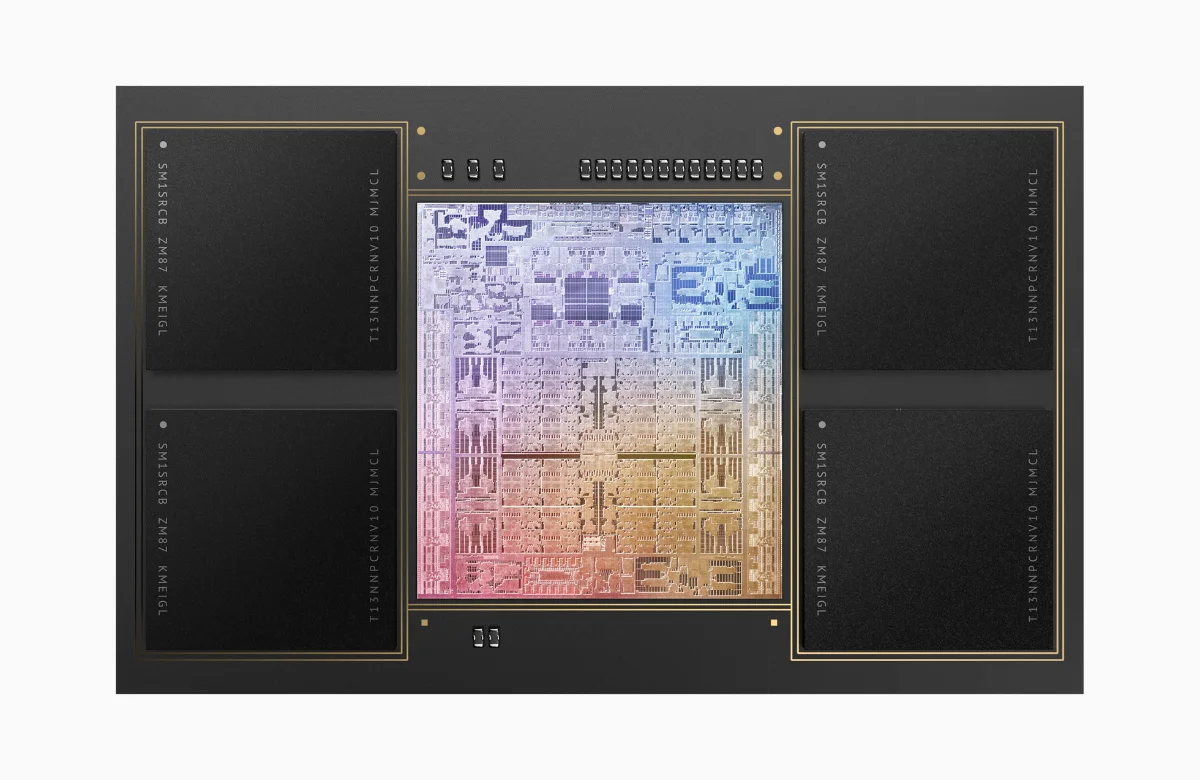
For more in depth read about the M1 Max / Pro, read here.
The M1 Max was first introduced on the all new redesigned MacBook Pro. It is expected that the chip will be featured in the Mac Mini and also the 27” iMac replacement.
The M1 Max and M1 Pro is a completely different System-On-Chip (SOC) than the M1 that is first introduced on the consumer products like the MacBook Air, the 24-inch iMac and the basic Mac Mini. While the M1 is aimed for power efficiency but decent performance, the M1 Pro and M1 Max are aimed at maximizing performance with a far higher power consumption envelope. Apple has put a self-imposed hard limit of 30W TDP for CPU and around 65W for the GPU on the M1 Max. Despite that, the M1 Max manages to be very competitive with Intel’s latest and greatest while keeping up with Nvidia’s top tier mobile GPU, the RTX-3080. Furthermore, because of the lower TDP, performance is managed to be consistent even on battery power, something that the Nvidia and Intel chips cannot seem to replicate at the moment.
The M1 Max features 10 computer cores which 8 are performance cores and 2 are efficiency cores, 16 core neural engine to do Machine Learning tasks and up to 32 graphic cores. The SOC also has dedicated video encoder / decoder circuits that are called the Media Engine. While the M1 Pro has one Media Engine, the M1 Max has two. There is speculation that Apple put their own matrix processor to help speed up matrix calculation, something that is essential in graphics and physics calculations. More speculations show that there is a second unactivated Neural Engine on the SOC.
M1 Pro Max Quad / Duo
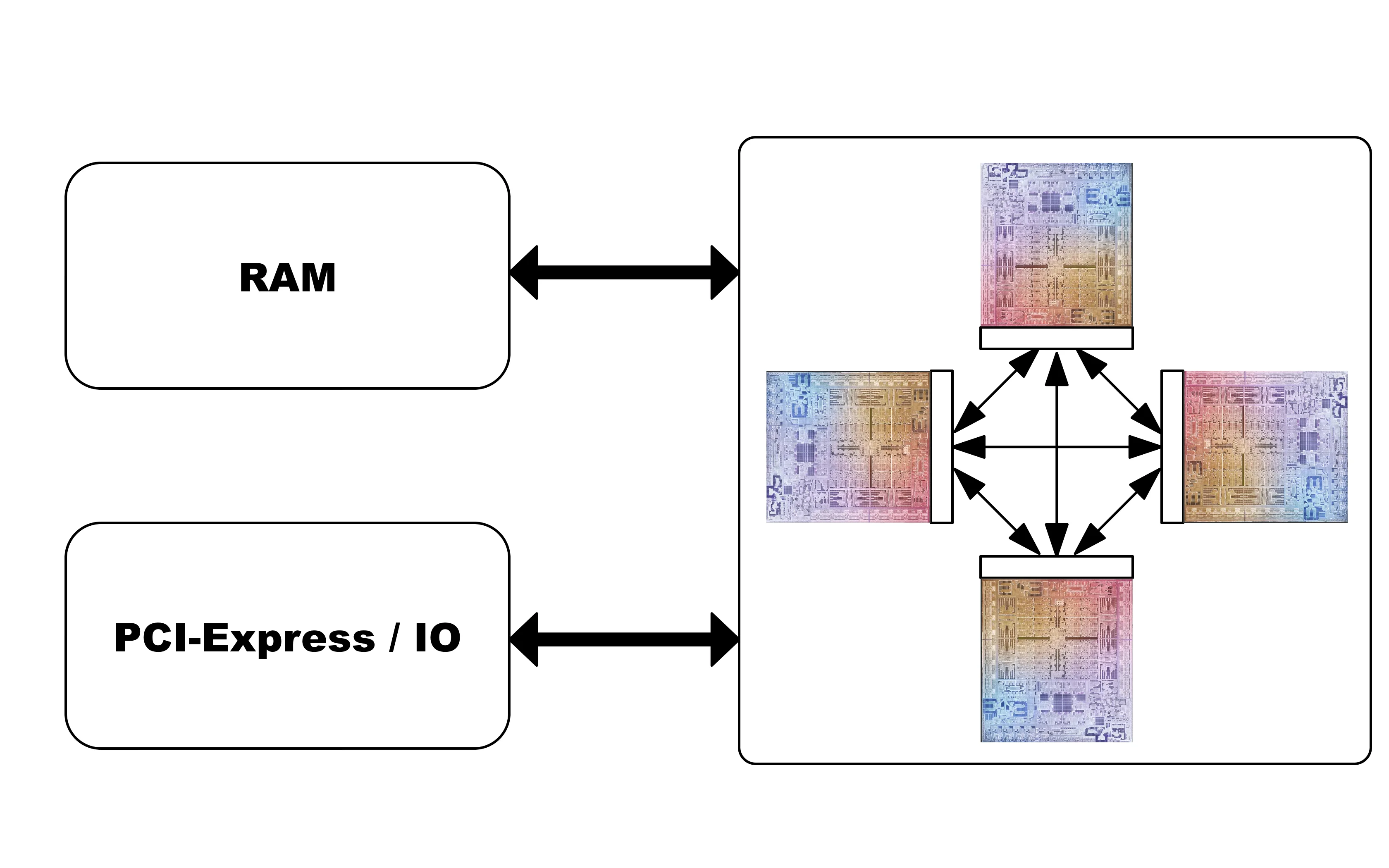
For a more in-depth view of what the M1 Max Duo and M1 Max Quad will be, read here
According to analysts, the M1 Max SOC featured a undocumented section at the bottom of the chip that was people are speculating as I/O interface for chip-to-chip communication. This points out that Apple’s plan for M1 Max to have multiple M1 Max chips on the single package to bump up the overall performance without the extra R&D and manufacturing cost to develop a specific data center level chip to be used in the highest end Mac, aka the Mac Pro.
These kinds of tactics are not uncommon in the data center world. For years, chip manufacturers like Intel and AMD have put multiple chips on a single package to boost performance. IBM is also famous for doing such things since the 1970s with the System/360. More recent example is AMD putting 8 modified Ryzen cores on a single package and renamed it to Eypc for the server line. The result is a single chip that has around 64 cores and can process 128 simultaneous threads.
Leaks has pointed out that Apple is planning to put up to 4 M1 Max chips on a single package. The end result is a chip that has up to 40 compute cores, 64 neural cores in 4 engines, 8 Media Engines that can handle around 30 8K streams at once, and a huge 128 core graphic engine that is equivalent to having dual RTX-3090 in a single package. The stats might be extreme for people who are looking from the outside, but in the data center / workstation / server world, these stats are actually competitive as we analyze the competition.
Intel Xeon

Xeon is the brand name carry for their high end offering that is focused for the workstation, server and data center market. They have a lot of features that consumer level chips simply won’t see. Their main focus is crunching massive amounts of data day in, day out and a robust platform that can handle that rare hardware failure.
On a per thread basis, they are not any faster than the consumer i9 chip. In fact, in some cases they are much slower. The difference is that they have larger data pipes to carry the data and more hardware to handle failures. Imagine the difference between a sports car and a dump truck. The consumer chip is the sports car and the Xeon chips are the dump truck. On a consumer chip, you want a decent amount of data processed quickly and in real time, like playing your favorite multiplayer shooter. But in a server chip, you have a huge dataset (like a 4D survey of a potentially lucrative oil field) that needs to be processed. So if your job is to carry and process the data, you want a dump truck that can carry a lot of data to the processing center at one time but slowly, instead of a fast sports car that can do each trip faster but carry only very little.

W-3275M
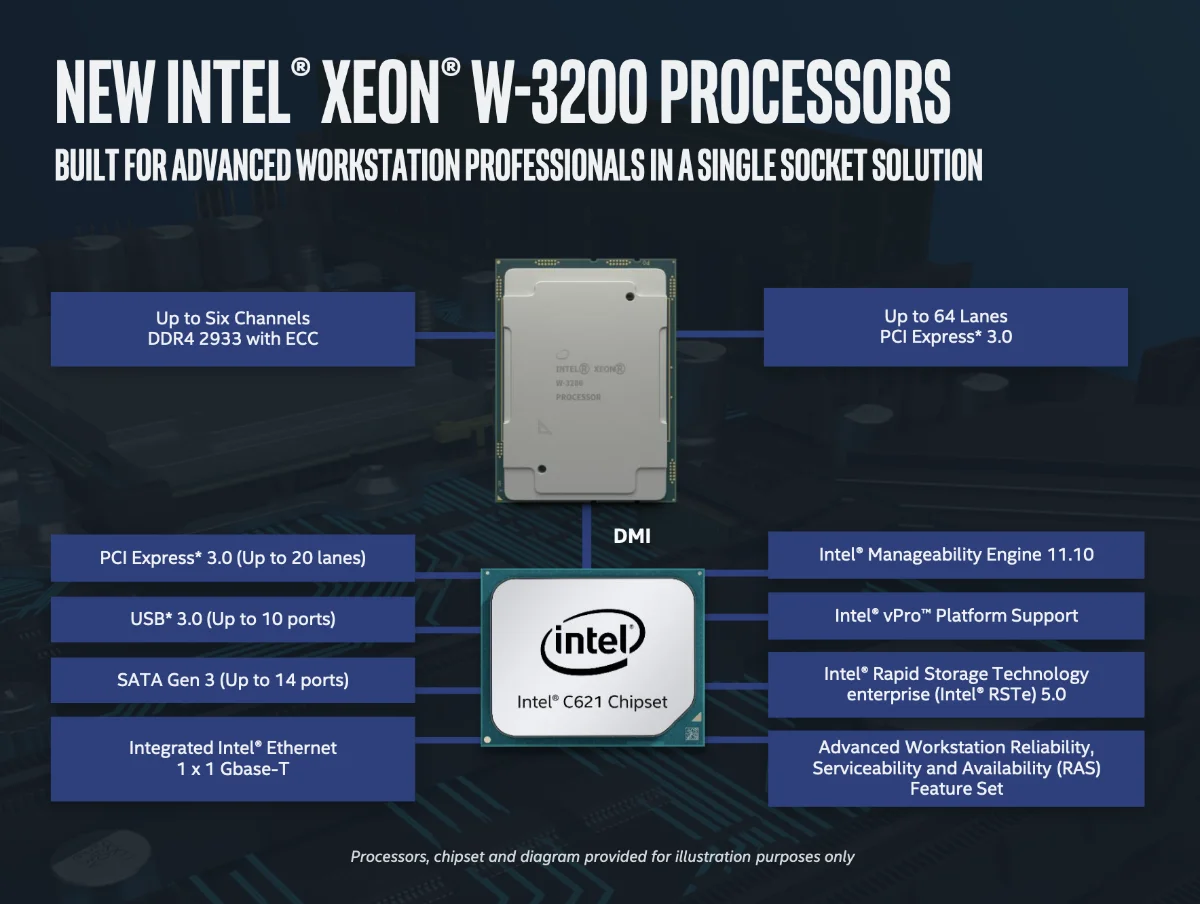
The Intel Xeon W-3275M is the top of the line processor that is being used (as an option) on the current Mac Pro. At list price of around $4,500, you will get a processor that has 28-cores and can do 56 threads at once, supports up to 2TB of ECC RAM (the Mac Pro only supports 1.5 TB RAM) and uses up to 205W of power at its peak. The main feature of this chip is the huge data pipe. While a typical i9 processor would have around 2 memory channels, this has 6 DDR4-2993 channels which would give a theoretical memory bandwidth of 140 GB/s.
W-3375
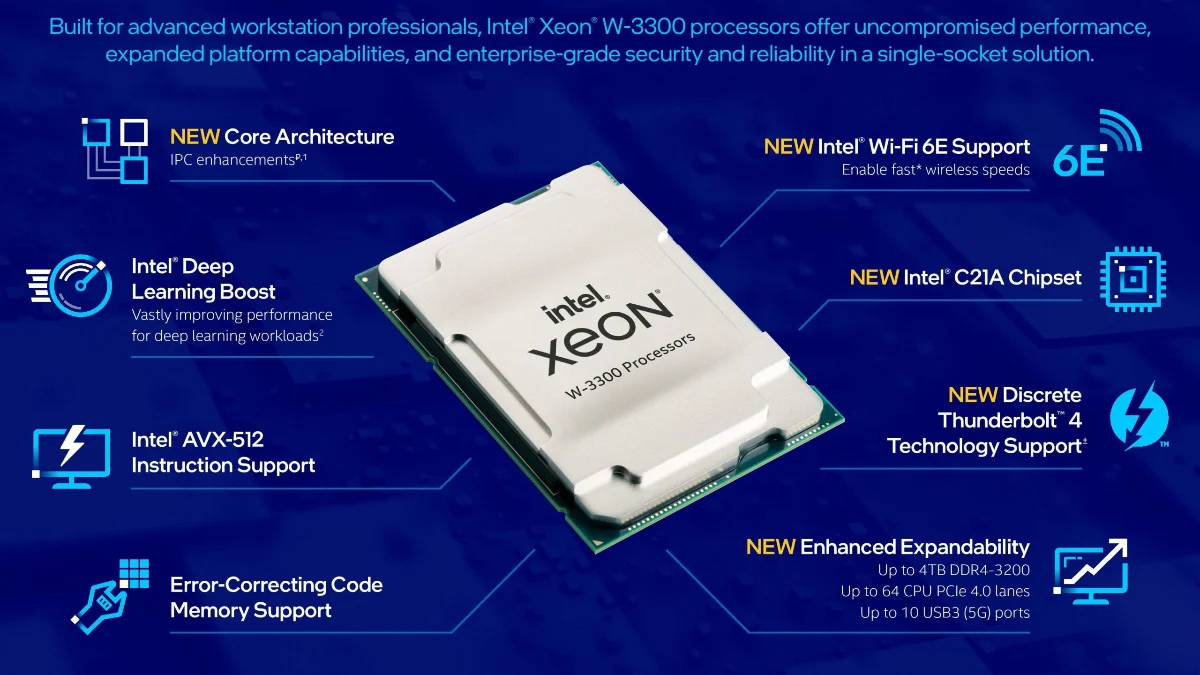
As Intel is releasing their 12th generation Core i9, the Xeon will also get an update. The top of the line, predictably, is named W-3375 which the 2nd digit signifies the generation number, which in this case, the 3rd generation.
For the 3rd Generation Xeon, the W-3375 bumps up everything. Core count has been bumped from 28 to 38 which allows it to handle 76 threads at once. The manufacturing process which Intel has been stuck in 14nm for years is now finally moved to 10nm process. RAM support is also bumped up to 4TB through 16 modules instead of 1TB for the W-3275 version, expect the W-3375M will have even higher limits. The W-3375 will also support PCI-e 4.0 which ensures faster data transfer for peripherals like network and graphic cards. For the memory situation, the W-3375 still uses DDR4 instead of DDR5, however the speed has been bumped from 2993 in the W-3275M to 3200 in the W-3375 which gives the theoretical bandwidth of 204 GB/s in eight channels.
Total Solution
One thing about Intel, is the total solution. While the chips themselve which gives them the bulk of the power, but the other accelerators chips are also important. The hardware network controller, the memory controller and now machine learning accelerators. All these improvements offload the work in the main chip so the Xeon chip itself can perform better.
For this, Intel also introduced Optane SSD / Persistent Memory (one of the most misunderstood products in my opinion) and a new network adapter (E810) to complement the Xeon launch.
Benchmarks
These are results from the passmark benchmark that we obtain. Please note that since some of the chips, namely the Intel W-3375 and Apple M1 Max Quad are not on the market yet, we can only estimate the performance based on the information that we gather.
For the W-3375, we postulate that core count will give a 1.35 times performance gain on multicore benchmarks. Moving the chip from 14 nm to 10 nm should give a 20% improvement in single threaded performance, which in turn affects multi core performance. So, most of the benchmarks that we estimate are based on Intel W-3275M performance then multiply by 1.35 and then 1.2 to get the final simulated benchmark figures.
For the Apple M1 Max Quad, since we already know the M1 Max performance and we know that the Quad will simply be 4 M1 Max chips in a single package, so we just multiply by 4 for every multi-core performance benchmarks. Of course, in the real world, chip-to-chip communication will take away a few points on efficiency, but this is the best estimate.
So from the onset, the new Apple M1 Max Quad can outperform the Intel W-3275M that is on the current Mac Pro. That’s the good news. Comparing the Quad with the newer Intel W-3375 is a mixed bag. While a few benchmarks pointed out that Intel is ahead, other tests show that Apple will be ahead. Overall, Apple is expected to field a very convincing chip on the Mac Pro.
There’s also a caveat that we would like to share about benchmarks. While benchmarks show the CPU performance, it does not show the whole picture about the system’s performance. Apple in reality, is all about the entire setup, not just the individual components. This is also the same with PC workstation / server manufacturers. Intel works with HP, Dell and others to make the best workstation / servers out in the market. That’s why people buy HP servers and Dell workstation, not some two bit company under the shady tree.
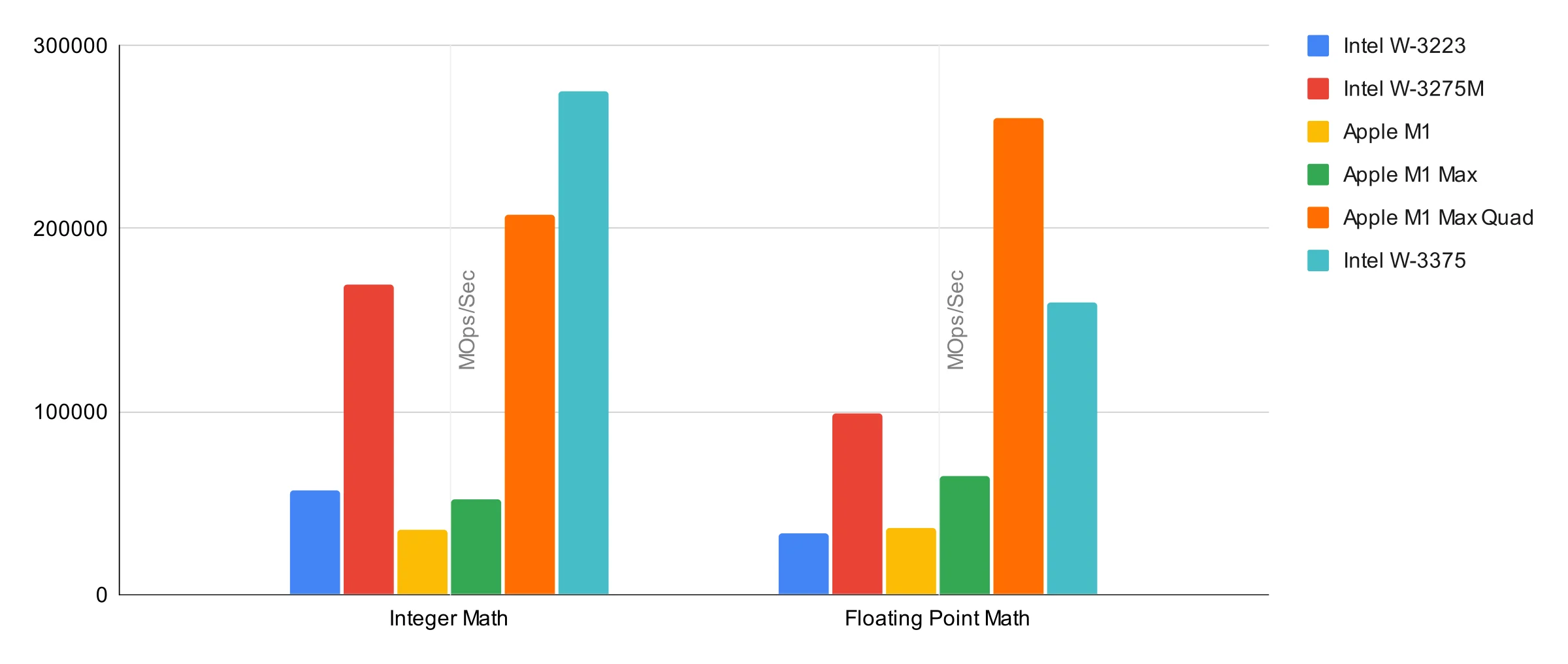
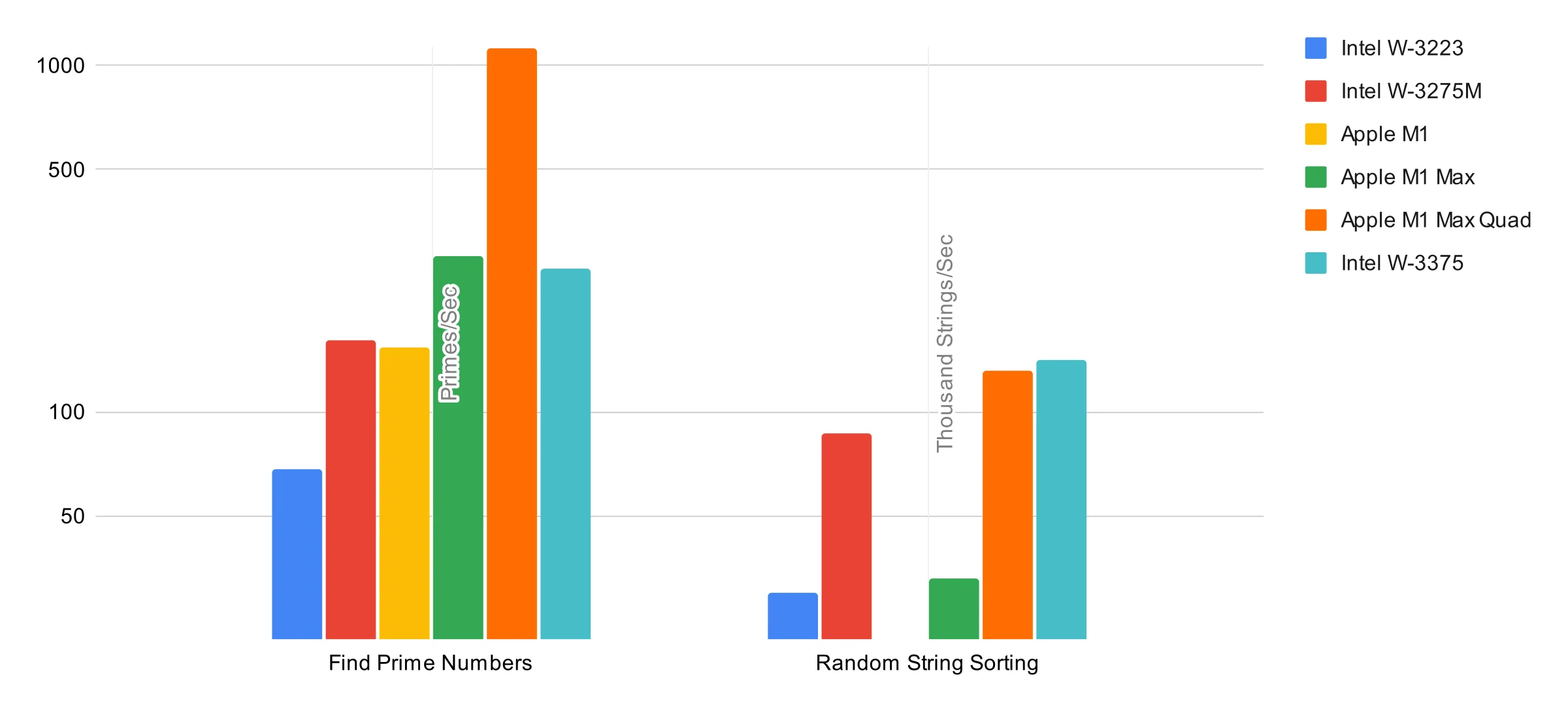
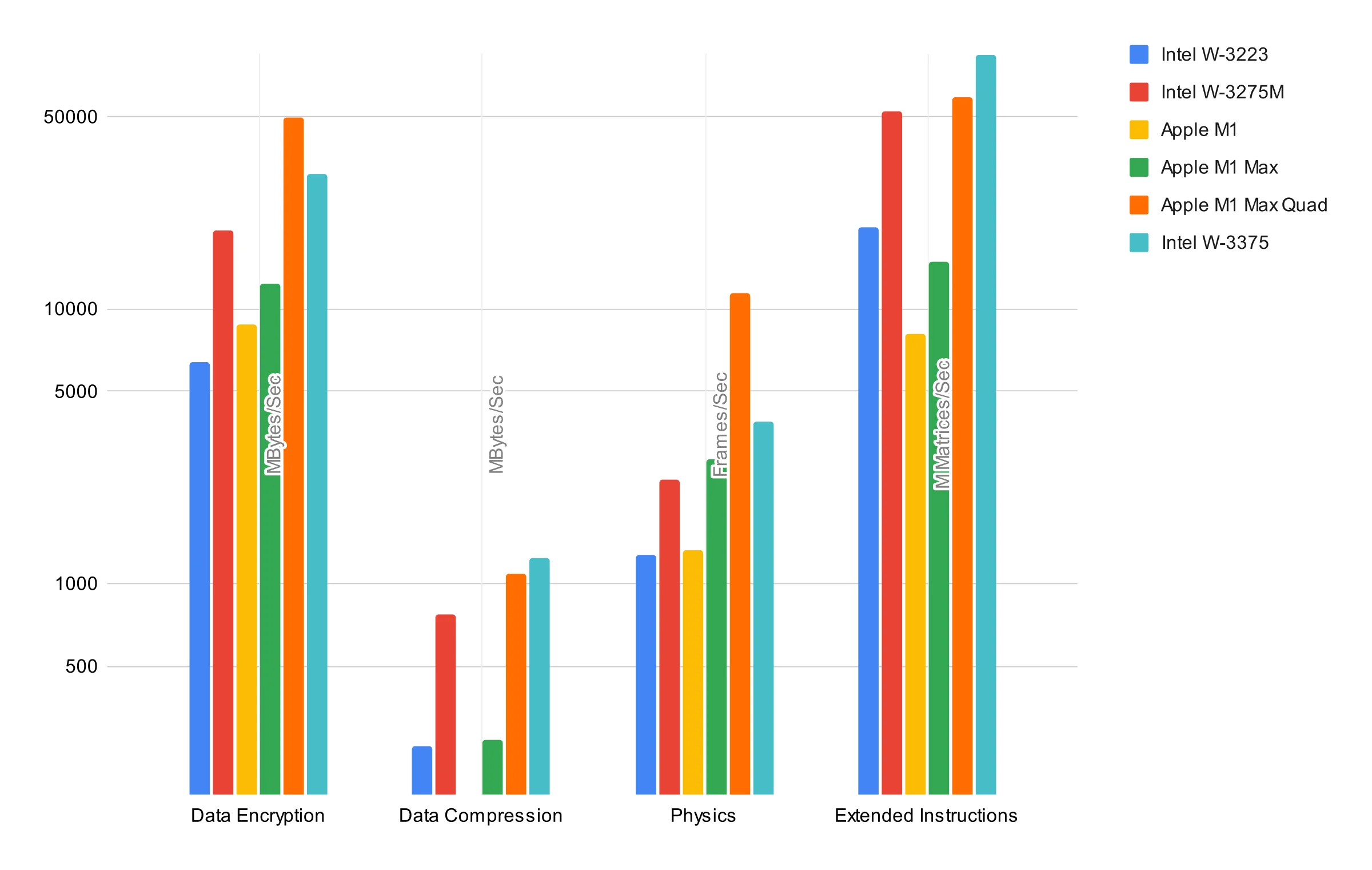
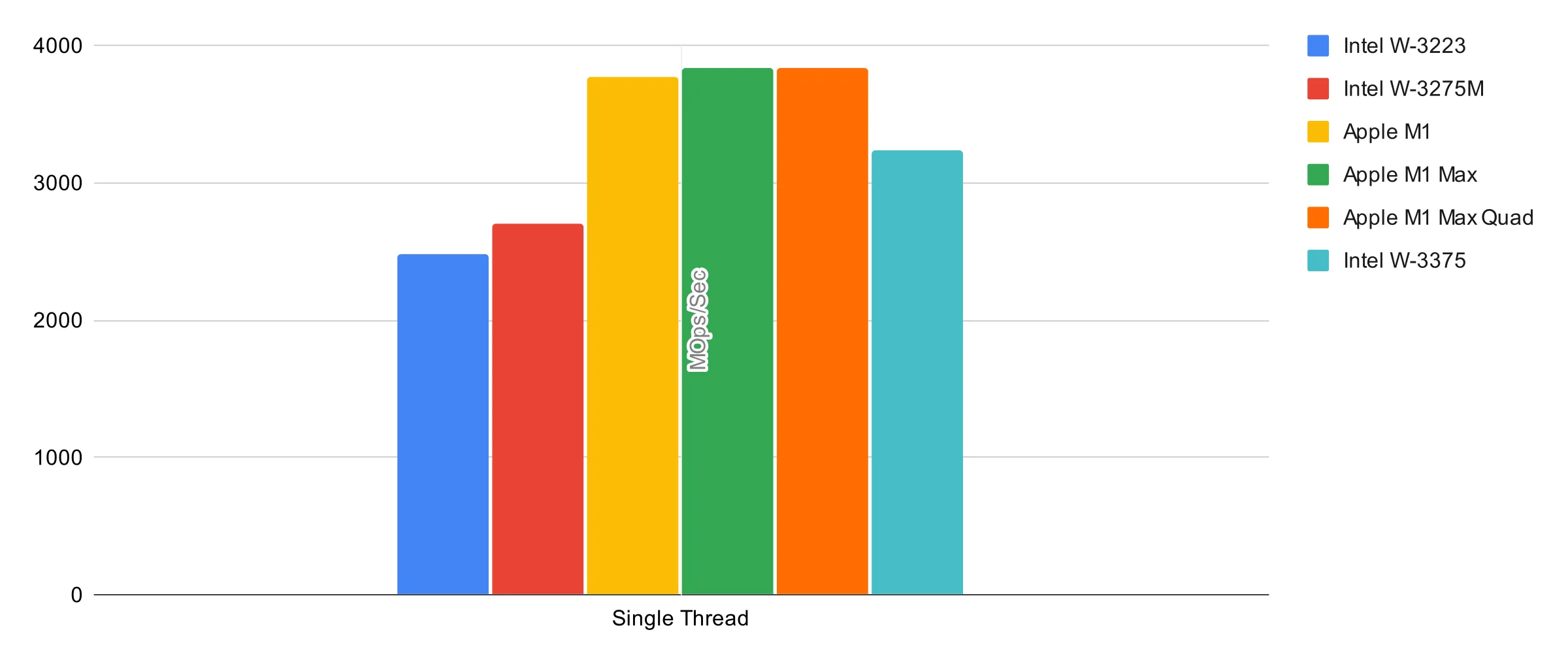
Conclusion
Apple’s upcoming M1 Max Quad chip will be a competitive chip in the server / workstation market. There are serious implications to this fact. For one, workstation builders like HP and Dell have margins to protect but they cannot fully control prices on their supplies, while Apple, which basically designs all of the major components, can. This means, while the chips themselves are quite competitive, Apple can reduce the price of the Mac Pro in order to be even more competitive. If Apple chooses this route, expect some price war for the saturated workstation market in the near future.
What does it mean to us? There is a possibility of having a cheaper Mac Pro (but still expensive and unnecessary for many), more R&D money will be poured into making faster, more efficient chips and we in the end will benefit from all of that. What a time to be alive.
